31 Delightful Classic Biscotti Varieties to Bake at Home
Biscotti, those delightful Italian twice-baked treats, have captured the hearts of dessert lovers worldwide with their distinctive crunch and elegant shape.
Their rich culinary heritage traces back to traditional European bakeries, where bakers perfected the art of creating crisp, long-lasting cookies.
These remarkable pastries stand out for their unique texture and versatility, easily pairing with coffee, tea, or sweet dessert wines.
Italians originally designed biscotti as a practical snack that could withstand long journeys and storage without losing quality.
Each variety tells a delicious story of regional ingredients, family recipes, and cultural traditions passed through generations.
Crisp, dry, and wonderfully dunkable, these cookies offer a sensory experience that transforms simple ingredients into extraordinary moments of pleasure.
You can uncover the magic of these 31 classic biscotti varieties that showcase remarkable flavor combinations and baking techniques:
Classic Biscotti Varieties for Dunking and Snacking
Italian biscotti come in countless flavors and textures. Crunchy and sweet, they’re perfect for coffee breaks or gift baskets.
Baci Di Dama
Baci di dama are delicate Italian sandwich cookies originating from Piedmont, characterized by their unique kissing shape that mimics two lips pressed together.
These elegant hazelnut shortbread cookies feature two round, crumbly halves joined by a rich chocolate-hazelnut spread in the center.
Piedmont's famous hazelnuts provide the signature nutty flavor and texture to these traditional treats.
Bakeries in Tortona first created the cookies during the late 19th century, quickly making them a beloved dessert across Italy.
Bakers carefully craft each cookie by grinding hazelnuts into a fine flour and mixing it with butter and sugar.
Holiday celebrations often feature these sophisticated sandwich cookies as a sweet finale to meals.
Italian families and pastry shops continue the tradition of making baci di dama using time-honored techniques.
Small yet elegant, these cookies represent a charming piece of Italian culinary heritage.
Amaretti (Sicily)
Amaretti are classic Italian almond cookies that define sweet sophistication with their crisp exterior and soft, chewy center.
These iconic treats originated in northern Italy, crafted from ground almonds, sugar, and egg whites to create a delicate meringue-like texture.
Sicilian versions showcase regional pride by using Syracuse almonds, blending both sweet and bitter kernels for complex flavor profiles.
Bakers carefully whip egg whites to create a light, airy consistency that melts in your mouth.
Each cookie delivers a subtle almond intensity balanced by gentle sweetness.
Ancient Italian monasteries first developed these cookies as simple yet elegant desserts.
Modern bakeries continue producing amaretti using time-honored techniques that highlight their pure, nutty essence.
Amaretti
Amaretti are classic Italian almond-flavored cookies originating from the Middle Ages with a distinctive bitter-sweet taste.
Traditionally crafted using bitter almonds, egg whites, and sugar, these delicate biscuits come in two primary textures: crispy (secchi) or soft (morbidi).
Saronno, a Lombardian town, popularized the iconic crispy amaretti through the Lazzaroni family's commercial production.
Italian bakeries often create these cookies with precise techniques passed through generations.
Almonds provide the signature intense flavor and delicate crunch that makes amaretti unique.
Small and round, these cookies pair perfectly with espresso or dessert wine.
Artisan bakers still use traditional recipes honoring the cookie's rich cultural heritage.
Cantuccini Toscani
Cantuccini are crisp almond biscuits from Tuscany that originated in Prato during the 16th century, initially served at the Medici court without almonds.
Historians trace their roots to similar biscuits from Pisa and Genova, with almonds becoming a standard ingredient in the late 19th century.
Tuscan bakers enhanced the recipe by adding butter and leavening agents to improve shelf life and export potential.
Italian bakers traditionally prepare these hard cookies by twice-baking them, creating a distinct dry texture perfect for dunking in sweet wine or coffee.
Their name derives from the Latin word "cantellus," meaning small slice of bread, and they are also known as biscotti.
Almonds provide a rich, nutty crunch that defines their signature flavor and texture.
Modern cantuccini remain a beloved Italian treat enjoyed worldwide.
Bakeries across Italy continue to craft these traditional cookies using time-honored techniques.
Amaretti Di Saronno
Amaretti di Saronno are delicate Italian almond cookies with a crisp exterior and soft interior, originating from a romantic legend in Lombardy.
Crafted from sugar, apricot kernels, and egg whites, these bittersweet treats emerged from a heartwarming story of two young lovers, Giuseppe and Osolina, who impressed a visiting Cardinal with their handmade sweets.
The cookies symbolize love and tradition, wrapped in pairs to represent the couple's bond.
Lazzaroni family holds the exclusive rights to produce these authentic cookies under the official name.
Generations have cherished these light, airy cookies as a testament to Italian culinary creativity.
Sweet and slightly crunchy, amaretti di Saronno pair perfectly with coffee or dessert wine.
Bakers continue to honor the original recipe that dates back three centuries.
Amaretti Di Sassello
Amaretti are iconic Italian almond cookies celebrated for their delicate crunch and intense nutty flavor profile.
Originating in numerous Italian regions, each area crafts unique variations using sweet and bitter almonds, apricot kernels, eggs, and sugar.
Sassello, a small Ligurian town, produces a particularly famous soft version with an almost marzipan-like interior, characterized by its high almond content.
Traditional recipes feature a crispy exterior that shatters with a gentle bite, revealing a tender center packed with rich almond essence.
Bakeries across Italy pride themselves on maintaining generational recipes that showcase subtle differences in texture and intensity.
Skilled bakers carefully balance ingredients to create cookies that range from crunchy to chewy, reflecting regional preferences.
Amaretti pair beautifully with espresso or dessert wines, making them a versatile treat enjoyed throughout Italy.
Home bakers and professionals alike continue to preserve this beloved cookie's delicate art of preparation.
Ricciarelli Di Siena
Ricciarelli di Siena are traditional Tuscan almond cookies with a rich medieval heritage originating in 14th-century Siena.
Soft, powdery white confections crafted from ground almonds and sugar, these cookies emerged from Arab-inspired culinary traditions brought back by Crusader nobleman Ricciardetto Della Gherardesca.
Renaissance aristocrats cherished these luxurious treats as rare delicacies, with almond paste once considered an exotic ingredient sold exclusively in specialized apothecaries.
Marzipan-like in texture, ricciarelli were initially called marzapanetti alla Senese or morzelletti during early production periods.
Elegant almond cookies boast a delicate powdered sugar coating that melts gently on the tongue.
European royal banquets frequently featured these sophisticated sweets as prized dessert offerings.
Sienese bakers continue preparing ricciarelli using traditional techniques passed through generations.
Biscotti Di Mandorla
Biscotti di mandorla are traditional Italian almond cookies originating from Sicily, characterized by their soft, melt-in-your-mouth texture and rich nutty flavor.
These delicate cookies combine finely crushed almonds, egg whites, and icing sugar into a smooth paste that transforms during baking.
Sicilian bakers shape the almond dough into various forms like round balls, disks, or elegant S-shapes.
Almond and vanilla extracts enhance their aromatic profile, while garnishes such as candied cherries, whole almonds, pine nuts, pistachios, or hazelnuts add visual appeal and extra crunch.
Powdered or granulated sugar often dusts the surface, providing a sweet finish.
Italians typically enjoy these cookies as a light dessert or afternoon snack alongside espresso or tea.
Biscotti Al Cocco
Biscotti al cocco are crumbly, coconut-infused Italian cookies featuring a rich buttery texture that melts in your mouth.
Italian bakeries craft these traditional treats by mixing eggs, sugar, butter, and grated coconut into a smooth dough.
Bakers typically shape the mixture into round balls or flat discs before baking them to a perfect golden crispness.
Sweet coconut provides an intense tropical flavor that distinguishes these cookies from other European pastries.
Originating in Italy, these cookies offer a simple yet elegant dessert option for coffee or tea time.
Melted chocolate or powdered sugar often garnish the cookies, adding extra sweetness and visual appeal.
Home bakers and professionals alike enjoy preparing these straightforward cookies for family gatherings.
Fresh coconut creates a distinctive crunch that makes biscotti al cocco a beloved Mediterranean snack.
Brutti Ma Buoni
Brutti ma buoni are classic Italian meringue-style cookies featuring a rustic, irregular appearance that belies their incredible taste.
Originating in Gavirate near Milan, these cookies emerged from Costantino Veniani's pastry shop in 1878 as a clever culinary invention.
Their name perfectly describes their unique charm: "ugly but good" reflects their bumpy, uneven surface and delightful flavor.
Almonds provide a rich base, while egg whites create a crisp exterior and soft interior.
Sugar and vanilla enhance the sweet profile, with cinnamon adding subtle warmth.
Traditional recipes combine simple ingredients like butter and flour to create these memorable treats.
Small bakeries throughout Northern Italy continue to prepare brutti ma buoni using generations-old techniques.
Travelers and locals alike adore these unpretentious cookies for their genuine flavor and homemade appeal.
Occhio Di Bue
Occhi di bue are iconic Italian sandwich cookies featuring two buttery shortbread rounds connected by vibrant fruit jam and elegantly dusted with powdered sugar.
Northern Italian bakeries popularized these treats, which resemble bull's eyes with their bright red jam centers peeking through delicate cookie layers.
Bakers traditionally use apricot, strawberry, or cherry jam to create the signature filling.
Austrian linzer augen inspired these classic cookies, which have become staples in Italian pastry shops.
Each cookie combines crisp, crumbly texture with sweet, fruity flavors.
Shortbread ingredients typically include flour, butter, and sugar.
Powdered sugar adds a final decorative touch to these simple yet elegant desserts.
Italian families often enjoy occhi di bue during afternoon coffee or as light dessert treats.
Zaletti
Zaleti are traditional Venetian cornmeal cookies distinguished by their golden yellow color and rustic texture, originating from northeastern Italy's regional baking culture.
Cornmeal serves as the primary ingredient, giving these cookies their signature dense and crumbly consistency.
Bakers typically enhance the cookies with bright lemon zest and plump raisins soaked in rum for added depth of flavor.
Interestingly, classic recipes omit sugar, creating a less sweet profile that pairs wonderfully with morning coffee or afternoon tea.
Grappa, a strong Italian grape-based brandy, often provides an optional boozy accent to the dough.
Regional home bakers traditionally prepare these cookies using simple, locally sourced ingredients.
Venetian families have passed down zaleti recipes through generations, maintaining their authentic culinary heritage.
These cookies represent a humble yet delicious snapshot of Italian regional baking traditions.
Tozzetti
Tozzetti are traditional Italian twice-baked cookies originating from Lazio and Umbria, distinguished by their crisp texture and rich nutty flavor.
Regional bakers carefully craft these hard cookies with premium hazelnuts, creating a crunchy treat perfect for dunking in hot tea or coffee.
Pistachios, candied fruit, or chocolate often enhance the cookie's complex taste profile.
Italians typically enjoy tozzetti as an afternoon snack or after-dinner dessert.
Family recipes pass down through generations, preserving the authentic preparation method.
Baking involves first creating a log-shaped dough, slicing it, and then twice baking to achieve maximum crunchiness.
Each tozzetti batch requires precise ingredient mixing and careful baking techniques.
Biscotti Del Lagaccio
Biscotti del Lagaccio are rustic double-baked Italian cookies originating in Genoa's Lagaccio neighborhood during the late 16th century.
Traditional ingredients include flour, butter, yeast, and sugar, with distinctive wild fennel seeds and anise liqueur adding complex flavor complexity.
Bakers carefully prepare these crisp treats by first baking a long dough log, then slicing and rebaking to create a crunchy texture perfect for dunking in coffee or sweet wine.
Generations of Italian families have enjoyed these hard biscuits as a classic breakfast or afternoon snack companion.
Wild fennel seeds provide a unique aromatic quality that sets these biscotti apart from other Italian cookie styles.
Historically connected to Genoa's culinary traditions, these cookies represent a simple yet meaningful part of Italian regional baking culture.
Biscotti Regina
Biscotti regina sparkle as traditional Sicilian cookies crafted with a distinctive sesame seed coating that transforms simple flour and sugar into a crunchy, elegant treat.
Originating in Palermo, these cookies carry royal connections through their name, which references Queen Margherita of Savoia.
Sweet and slightly savory, biscotti regina balance a tender interior with a golden, toasted sesame exterior.
Mediterranean ingredients like flour, sugar, and eggs form their basic composition.
Sicily embraces these biscuits as a beloved snack enjoyed during morning coffee or afternoon breaks.
Home bakers and bakeries across the island prepare them using time-honored techniques passed through generations.
Sesame seeds create a signature crunch that distinguishes these cookies from other Italian baked goods.
Hand-rolled and carefully baked, biscotti regina represent a delicious slice of Sicilian culinary heritage.
Baicoli
Baicoli are delicate Venetian biscotti characterized by their unique sea bass-shaped profile and subtle sweetness.
These thin, crisp cookies emerged from 18th-century Venetian bakeries, crafted with simple ingredients like flour, butter, sugar, yeast, egg whites, and milk.
Bakers carefully shape the dough to resemble a small fish, creating a distinctive elongated and flattened form.
Venice's traditional recipe demands precise baking techniques to achieve the signature crunch and light texture.
Italians often enjoy baicoli as a companion to coffee or sweet dessert wine, making them a beloved breakfast and afternoon snack.
Maritime influences shine through in their name, which directly translates to "sea bass" in reference to their fish-like silhouette.
Venetian bakers take pride in maintaining this historic recipe's authenticity and delicate preparation method.
Small yet memorable, baicoli represent a charming slice of Italian culinary heritage.
Amaretti (Piedmont)
Amaretti are classic Italian almond cookies celebrated for their crisp exterior and chewy interior, crafted from a delicate blend of sweet and bitter almonds, sugar, and egg whites.
Originating in northern Italy, these distinctive cookies boast a rich culinary heritage dating back centuries.
Pastry chefs traditionally create amaretti through careful grinding of almonds and precise sugar incorporation.
Small, round, and often dusted with powdered sugar, these cookies offer a complex sweet-nutty flavor profile.
Bakeries and home kitchens throughout Italy continue to preserve traditional amaretti-making methods.
Italians enjoy amaretti as standalone treats or paired with espresso and dessert wines.
Bakery shelves and family recipe books highlight amaretti as a beloved national sweet.
Anicini
Anicini are traditional Italian biscotti bursting with sweet anise flavor, originating from Sardinia and Liguria.
Regional bakers craft these cookies by first creating a soft loaf using eggs, flour, sugar, orange blossom water, and aniseed.
Bakers then slice the initial loaf into thin, crisp pieces that become perfectly crunchy when baked a second time.
Anise provides a distinctive licorice-like taste that makes these cookies unique among Italian sweets.
Locals enjoy anicini as a classic dessert or breakfast companion to coffee or tea.
Mediterranean ingredients contribute to their rich, aromatic profile.
Families often pass down generations-old recipes for these beloved crisp treats.
Biscotti Alla Cannella
Biscotti alla cannella are classic Italian twice-baked cookies distinguished by their warm cinnamon flavor and unique olive oil-based recipe.
Traditional ingredients include flour, sugar, eggs, lemon zest, and baking powder, which combine to create a crisp, aromatic treat.
Italian bakers carefully craft these crunchy biscuits with a signature twice-baking technique that ensures their signature dry, hard texture.
Olive oil replaces butter in this recipe, lending a distinctive moistness and subtle richness to the cookies.
During baking, a fragrant cinnamon aroma fills the kitchen, promising a delightful sensory experience.
Perfect for dunking, these cookies pair exceptionally well with hot coffee or espresso.
Generations of Italian families have enjoyed biscotti alla cannella as a simple yet satisfying sweet snack.
Crisp, spicy, and lightly sweet, these cookies represent a beloved Italian baking tradition.
Amaretti Di Gallarate
Amaretti are classic Italian almond cookies renowned for their unique crispy exterior and soft, chewy center that melts in your mouth.
Originating from northern Italy, these sweet treats combine ground almonds, sugar, and egg whites to create a delicate texture and intense almond flavor.
Traditional amaretti come in two main styles: crisp and hard or soft and chewy, with each region offering its own subtle variations.
Bakeries across Italy pride themselves on their signature amaretti recipes, often passing down techniques through generations.
Lombardy and Piedmont are particularly famous for producing exceptional versions of these cookies.
Skilled bakers carefully balance sweet and bitter almonds to achieve the perfect balance of nuttiness and sweetness.
Amaretti pair wonderfully with espresso or dessert wine and are often enjoyed during celebrations and holidays.
Italians consider these cookies a beloved national confection that represents the country's rich culinary heritage.
Amaretti Casperiani
Amaretti are crisp, sweet Italian almond cookies originating from Northern Italy with a distinctive crackled surface and intense almond flavor.
Lombardy and Piedmont regions claim strong historical connections to these cookies, which often appear in traditional dessert platters.
Bakeries and home kitchens prepare amaretti through a straightforward process of grinding almonds, mixing with sugar and egg whites, and shaping into small rounds before baking.
Ancient recipes date back to the Renaissance period, when convents and noble families first developed sophisticated almond-based confections.
Commercial production began in the early 19th century, with famous brands like Lazzaroni establishing widespread popularity.
Modern amaretti come in two primary styles: soft and crisp, with crisp versions being more common in international markets.
Amaretti (Lazio)
Amaretti are classic Italian almond cookies known for their crisp exterior and soft, chewy center that crumbles delicately in your mouth.
These sweet treats originate from northern Italy, where generations of bakers have perfected their unique recipe using ground almonds, sugar, and egg whites.
Traditional amaretti come in two main styles: hard and crunchy or soft and pillowy, each offering a distinct texture and intense almond flavor.
Bakeries across Italy pride themselves on their specific amaretti variations, with some regions adding subtle touches like amaretto liqueur or orange zest.
Small, round, and typically dusted with powdered sugar, these cookies pair perfectly with espresso or dessert wine.
Skilled pastry makers carefully balance sweet and bitter almonds to create their signature intense nutty taste.
Amaretti have become popular worldwide as a classic Italian dessert enjoyed during holidays and special gatherings.
Families often pass down their secret amaretti recipes through generations, preserving this beloved culinary tradition.
Amaretti (Emilia-Romagna)
Amaretti are classic Italian almond cookies originating from multiple regions with unique flavor profiles and traditional recipes.
Sweet and bitter almonds form the core ingredient base, creating complex nutty tastes that set these cookies apart from other desserts.
Spilamberto municipality in Modena province claims a historic version dating back to the 17th century, featuring soft, bittersweet characteristics.
Egg whites and sugar bind the almonds into crisp yet delicate cookies with a distinctive crunch.
Apricot kernels sometimes enhance the nutty complexity of these treats.
Bakers carefully balance sweet and bitter almond ratios to achieve perfect texture and taste.
Italians consider amaretti essential for celebrations and everyday enjoyment, serving them with coffee or as a light dessert.
Biscottini Di Novara
Biscottini di Novara are delicate Italian shortbread cookies originating from Northern Italy's Piedmont region, known for their crumbly texture and subtle sweetness.
Small round or elongated cookies emerge from a simple mixture of flour, sugar, eggs, salt, and corn starch carefully kneaded into a soft dough.
Bakers gently shape the dough into traditional forms before baking them to a light golden color.
Local bakeries in Novara have perfected these cookies over generations, making them a beloved regional treat.
Home bakers and professional pastry makers alike treasure these unassuming cookies for their simplicity and authentic taste.
Generations of Italian families have enjoyed these cookies as a classic accompaniment to afternoon tea or coffee.
Regional pride in Biscottini di Novara continues to preserve this classic shortbread recipe.
Ossi Dei Morti
Ossi di morto are hard, crunchy Italian biscuits shaped like bones and traditionally prepared during Italy's All Saints' Day to remember deceased loved ones.
Originating in various Italian regions, these symbolic cookies feature a stark white color and dry, crisp texture resembling skeletal structures.
Bakeries and home kitchens prepare these meaningful treats to connect generations through shared culinary memories.
Family members exchange the bone-shaped cookies as a way of honoring ancestors and maintaining cultural traditions.
Bakers often use simple pantry ingredients to craft these meaningful sweets.
Religious significance blends with culinary craft in this unique commemorative biscuit.
Sweet yet somber, ossi di morto represent a poignant intersection of remembrance and Italian baking culture.
Amaretti (Molise)
Amaretti are classic Italian almond cookies renowned for their distinctive crisp exterior and soft, chewy center crafted from ground almonds, sugar, and egg whites.
Originating in northern Italy, these sweet treats boast a rich culinary heritage spanning centuries of traditional baking techniques.
Sweet and bitter almonds create a complex flavor profile that distinguishes amaretti from other cookies.
Italian bakeries and home kitchens carefully whip egg whites to create the signature light, airy texture that melts in your mouth.
Sugar provides caramelized sweetness that balances the nutty almond intensity.
Small, round, and often dusted with powdered sugar, amaretti are typically served alongside espresso or used as a crumbled topping for desserts.
Families and pastry shops continue to preserve this beloved Italian cookie tradition through generations of passionate baking.
Biscotti Della Monaca
Biscotti della monaca are iconic S-shaped Sicilian cookies with deep monastic roots from Catania's Convent of Santa Chiara.
Nuns originally crafted these unique treats using a closely guarded recipe passed through generations.
Simple ingredients like flour, sugar, margarine, ammonia, milk, anise, and salt create their distinctive flavor and texture.
Bakers carefully knead the dough, form it into balls, and let it rest in the refrigerator.
Rolled and cut into signature S-shapes, these cookies undergo a precise two-stage baking process.
First, they bake for ten minutes, then return to the oven for an additional twenty minutes.
Modern bakeries continue the traditional preparation method, preserving the cookie's rich historical significance.
Sicilians celebrate these cookies as a delightful connection to their cultural culinary heritage.
Biscotti Dei Poveri
Biscotti dei poveri represent ingenious Italian peasant cookies crafted from resourceful ingredients when wheat flour was scarce.
Kitchen creativity transformed stale bread into a sweet treat by soaking bread pieces in milk and blending them with eggs, sugar, olive oil, pine nuts, raisins, and cinnamon.
Home bakers would mix these humble components into a smooth batter and drop spoonfuls onto baking pans.
Mediterranean resourcefulness shines through this simple recipe born from economic necessity.
Italian home kitchens traditionally made these cookies as a way to prevent food waste.
Families enjoyed the sweet, spiced cookies with minimal ingredients.
Pine nuts and raisins added texture and flavor to the basic bread-based dessert.
Biscotti Al Gorgonzola
Biscotti al gorgonzola are crisp Italian cheese crackers bursting with bold blue cheese flavor and nutty undertones.
Originating from Northern Italy, these savory snacks blend sharp Gorgonzola with parmesan cheese in a buttery base.
Crushed walnuts and sesame seeds create a crunchy exterior that complements the rich cheese profile.
Home bakers carefully shape small circular dough rounds and brush them with cream before adding nutty toppings.
Each biscotto combines traditional Italian baking techniques with premium ingredients.
Sesame seeds and walnuts provide textural contrast to the smooth cheese mixture.
Bakers chill the dough before baking to ensure perfect consistency.
Served as an appetizer or alongside wine, these biscotti offer a sophisticated twist on classic Italian crackers.
Amaretti Di Carmignano
Amaretti are classic Italian almond cookies with a crisp exterior and soft, chewy center originating from northern Italy's Lombardy region.
Sweet and bitter almonds form the cookie's signature flavor, creating a delicate balance between nutty and sugary profiles.
Traditional recipes blend ground almonds, sugar, and egg whites to produce light, airy cookies with a distinctive crackled surface.
Each Italian region offers unique variations, reflecting local culinary traditions and family recipes passed through generations.
Bakeries and home kitchens across Italy prepare these cookies using techniques that preserve their delicate texture and intense almond essence.
Amaretti pair perfectly with espresso or dessert wine and serve as both a standalone treat and ingredient in cakes, tarts, and other confections.
Italians enjoy these cookies during celebrations, holidays, and as everyday afternoon snacks.
Small and elegant, amaretti represent a beloved piece of Italian gastronomic heritage that continues to delight locals and international food lovers.
Mandorlini Del Ponte
Mandorlini del ponte are delicate Italian meringue cookies from Ferrara that showcase a unique crisp texture created by carefully whipping egg whites over simmering water.
These traditional cookies draw their name from Pontelagoscuro's historic bridge, symbolizing local culinary heritage.
Almonds, sugar, egg whites, flour, and butter form the simple ingredient list that creates their distinctive crackly exterior.
Skilled bakers achieve the perfect dry, light consistency through precise preparation techniques.
Originating in northeastern Italy, these cookies represent a classic sweet treat enjoyed during special occasions.
Italian bakeries and home kitchens continue to prepare mandorlini del ponte using generations-old methods.
Regional ingredients contribute to their authentic flavor profile.
Ferrara's baking tradition shines through these elegant, crisp meringue cookies that melt in your mouth.
Which Biscotti Varieties Pair Best With Coffee, Tea, or Wine?
Biscotti’s crunchy texture and subtle sweetness make it a versatile companion for various beverages. Here’s how different biscotti flavors pair with coffee, tea, or wine:
Each pairing highlights different flavor notes, enhancing your enjoyment whether you’re sipping a morning brew or indulging in an after-dinner treat.




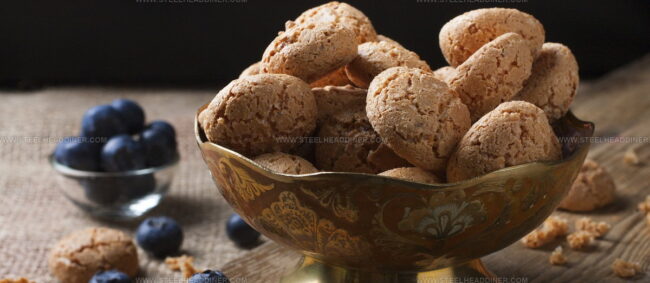
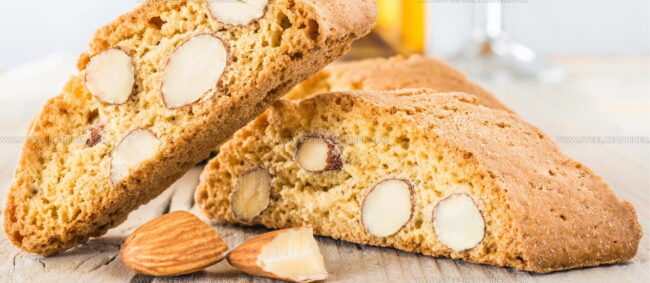
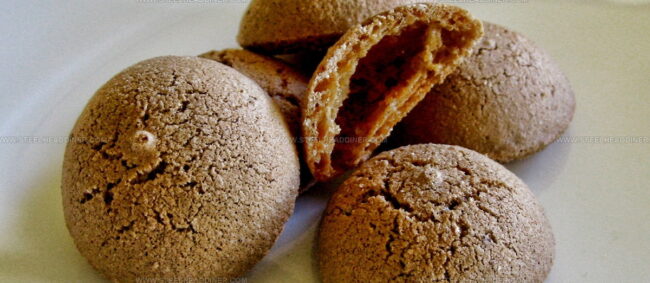


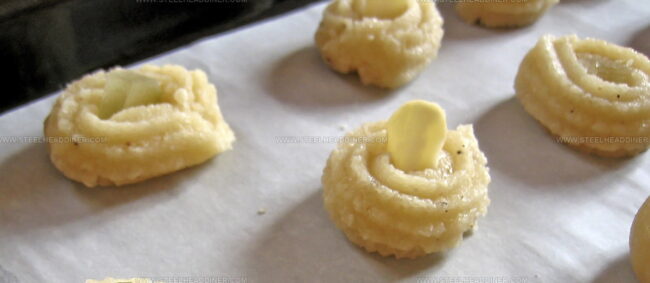





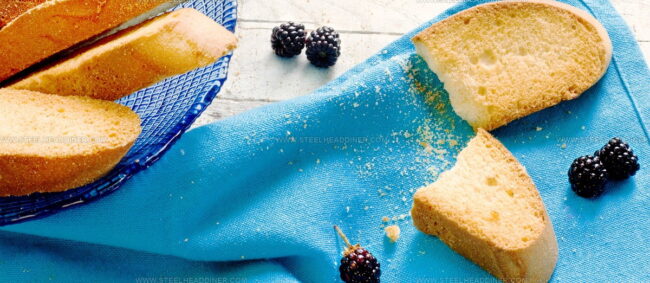
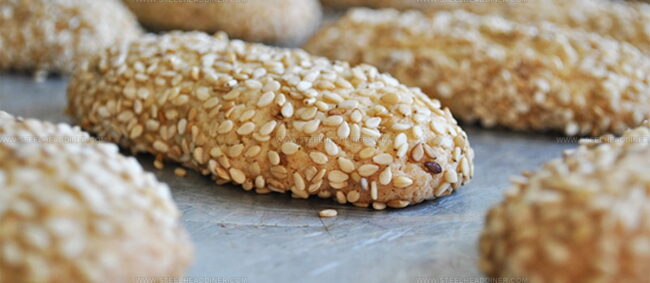
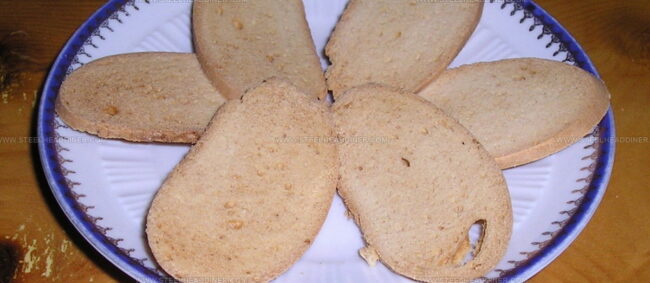






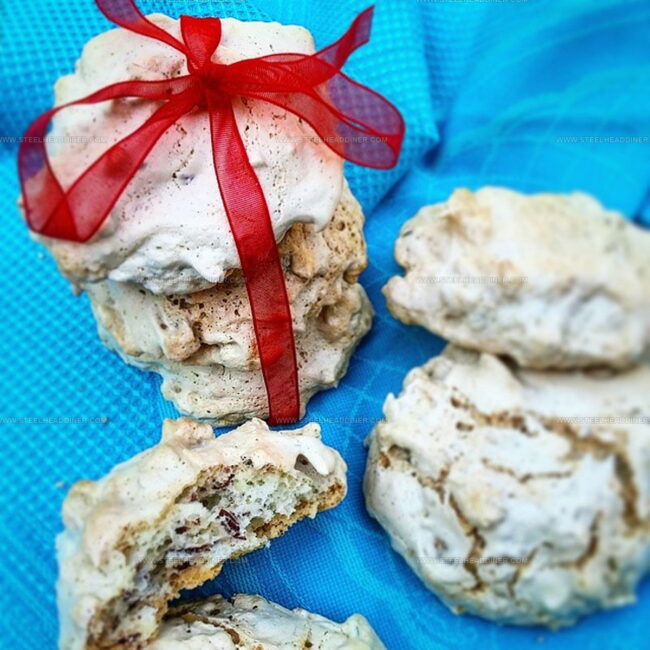
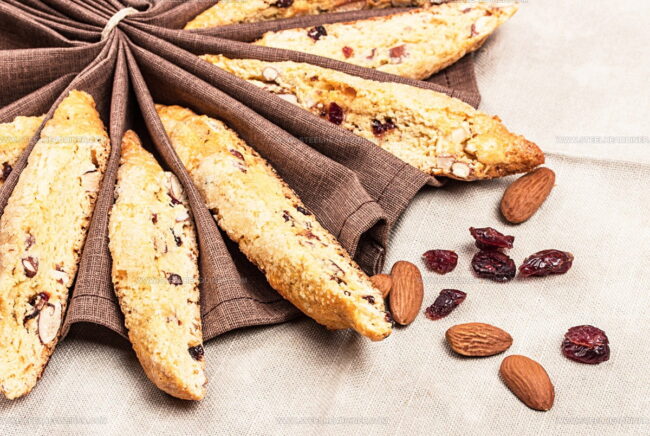
Jack Monroe
Founder & Recipe Innovator
Expertise
Pacific Northwest cuisine, Single-serving recipe development, Sustainable sourcing and cooking, Modern comfort food
Education
Brightwater
Associate of Applied Science in Culinary Arts
Focus: Sustainable cooking, seasonal ingredients, and food systems education
Jack grew up with a fishing rod in one hand and a cast-iron skillet in the other. After graduating from Brightwater: A Center for the Study of Food, he set out to prove that cooking for one could still taste like a feast.
Jack believes that food should feel real: fresh, fearless, and a little wild, just like the rivers he grew up around. For Jack, every single dish is a small adventure, and the best ones are the ones you can cook with heart, not hassle.